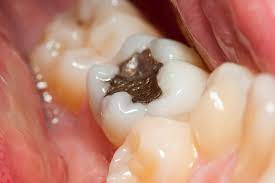One common question patients ask is, how soon can I brush after a filling? Proper oral hygiene after dental treatment is vital to ensure healing and maintain the longevity of the Dental Tooth Filling. However, immediately brushing right after a filling can sometimes cause sensitivity or disrupt the restoration if not done correctly. Understanding the right timing and techniques for brushing after a filling helps protect your teeth, prevent complications, and promote optimal oral health.
Why Timing Matters After a Dental Filling?
After a dental filling, your tooth and surrounding tissues may be temporarily sensitive or numb due to anesthesia. The materials used for the filling also need time to set properly.
Important considerations about timing include:
- Numbness from anesthesia can cause accidental biting or injury if brushing too soon
- Some filling materials require a certain period to fully harden and bond with the tooth
- Immediate brushing with too much pressure may irritate gums or disrupt the filling
- Allowing saliva to naturally cleanse the area initially can promote healing
Timing your brushing appropriately ensures the filling remains intact and your mouth heals well.
Recommended Time to Wait Before Brushing:
Generally, dentists advise waiting at least 2 to 4 hours before brushing after a filling procedure. However, this may vary based on the type of filling and individual sensitivity.
Guidelines to follow:
- Avoid brushing for the first couple of hours to let anesthesia wear off
- Use gentle brushing techniques once you resume to avoid discomfort
- Follow your dentist’s specific instructions, especially if you had composite or amalgam fillings
- If a temporary filling was placed, follow special care instructions from your dentist
Waiting a short period helps prevent irritation and accidental damage.
How to Brush Safely After Getting a Filling?
When it’s time to brush after a filling, doing it correctly is essential to protect your tooth and gums.
Tips for safe brushing include:
- Use a soft-bristled toothbrush to reduce gum irritation
- Brush gently around the filled tooth without aggressive scrubbing
- Avoid abrasive toothpaste that might irritate sensitive areas
- Consider using a fluoride toothpaste to strengthen enamel
- Floss carefully around the filled tooth to avoid dislodging the filling
- Rinse your mouth with warm salt water if you experience mild soreness
Proper brushing promotes healing while maintaining oral hygiene.
Additional Care Tips Following a Filling:
Besides brushing, several other care practices help ensure the success of your dental filling.
Recommended care tips:
- Avoid eating hard, sticky, or chewy foods for at least 24 hours, especially with composite fillings
- Stay away from extremely hot or cold foods if you experience sensitivity
- Use over-the-counter pain relievers if you feel mild discomfort after the procedure
- Avoid smoking and alcohol to promote faster healing
- Attend follow-up dental appointments to monitor the filling’s condition
- Maintain consistent oral hygiene routine once the tooth feels normal
These steps help prevent complications and prolong the filling’s durability.
When to Contact Your Dentist After a Filling?
Knowing when to seek professional advice after a Dental Tooth Filling Treatment is important if you experience problems.
Contact your dentist if you notice:
- Severe or prolonged pain beyond a few days
- Persistent sensitivity to temperature or pressure
- A loose or missing filling
- Swelling or signs of infection such as redness or pus
- Difficulty biting or chewing on the filled tooth
- Any unusual changes in your bite or tooth appearance
Timely dental visits ensure any issues are addressed promptly.

